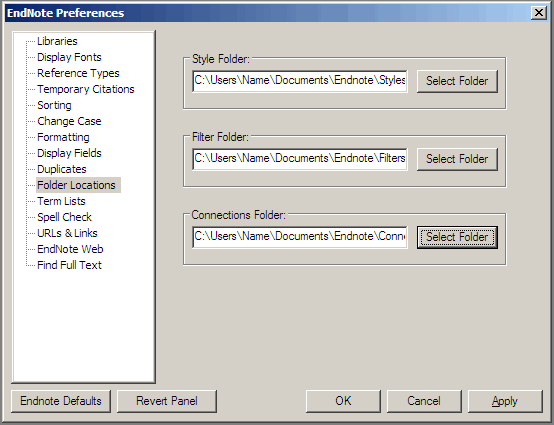These instructions refer to installation of EndNote X7 on your own PC or laptop - – they assume WindowsXP. Mac users should consult the information about using EndNote on a Mac. Ensure any earlier versions of Endnote EndNote are removed before installation of X2X7.
Using
...
Office
...
EndNote X7 Neither Vista nor Office 2007 are yet officially supported but Endnote X2 is compatible with Vista and Office 2007Office 2013 and earlier. See the EndNote site for up-to-date details on compatibilities.
Step 1: Install the software
Download the software from the links on the Endnote EndNote Software page.
If by any chance you cannot download the software, you can borrow the EndNote installation CD-ROM from the ICT Service Desk. You'll be asked to show your UC ID. Install the software following the instructions on the Endnote disc.
The most important thing to note for Windows installations is that the only file that you should run is ENX2Inst.msi
| Note |
|---|
Before you install the software, you must extract the files – your installation will not work otherwise. To do this, follow the extract instructions on the EndNote Software page referred to above. |
For Windows installations the file to run is UC_EndnoteX7.exe.
| Anchor | ||||
|---|---|---|---|---|
|
The Library provides some modified and additional Filters, Connection files, and Styles which are useful for this University. What are Styles, Filters and Connections? An example of a connector you may want is one that allows direct, although limited, searching of the UC Library Catalogue (this connector is called U Canterbury.enz).
Once EndNote is loaded you will need to copy these files to your laptop or PC.
- Download In the file that you downloaded, there will be a folder called UC_Styles which contains sub-folders for each of filters, styles, and connection files. Alternatively, download from the Library web the following compressed folders: filters.zip, connections.zip & styles.zip - although first check the installation folder as you may find copies of these files included - usually in a folder with a name like UOC-modifiedFiles. However, the versions available through links above do get updated several times a year.
You may wish to move your original filters, connections files to a new location before you transfer in the University of Canterbury approved filters and connections files. Note that any zipped files need to be 'unzipped' i.e. right-click and choose the extract command. - Locate the Filters, Connections and Styles folders on your computer (these folders should have been created during the EndNote installation process). To locate them go to EndNote > Edit > Preferences > Folder Locations:
The folder names will be different on your PC. This screenshot shows a vista-version, but 'Name' will be dependent on your PC. If nothing shows in these folders, you can either create folders for them, or copy the files into the appropriate folders directly under C:\Program Files (x86)\EndNote X6 - but in this case you will have to re-copy the files if you ever upgrade. - Extract the compressed Filters, Connections and Styles into these folders.
...
If you have problems after installation (e.g. no toolbar in Word) our problems page may help, as may the Endnote EndNote site.
Updates
From time-to-time Endnote EndNote release patches and upgrades to EndnoteEndNote. To check for these, Click on Click Help, then on Endnote then EndNote Program Updates
